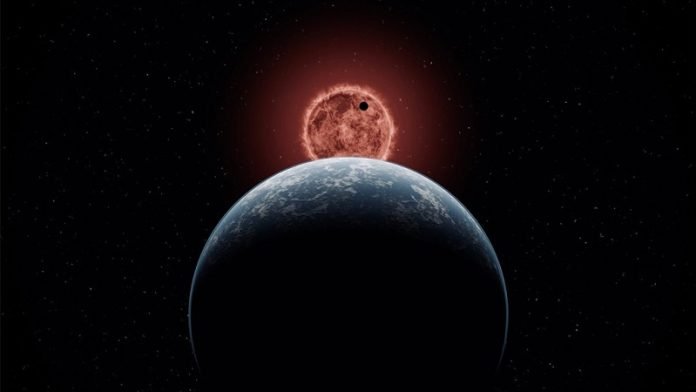
Scientists from the University of Liege and NASA’s TESS telescope have made an exciting discovery about a distant star system.
The system, named TOI-2096, is located 150 light-years away from Earth and consists of two planets slightly larger than our own planet Earth.
This amazing finding has been published in the journal Astronomy & Astrophysics.
The researchers used NASA’s TESS satellite, which is on a mission to find planets orbiting stars close to us.
TESS observes thousands of stars and looks for tiny changes in brightness that could indicate a planet passing in front of the star. However, to confirm the existence of planets, ground-based telescopes are needed.
The planets in the TOI-2096 system, called TOI-2096 b and TOI-2096 c, were observed and studied using a network of telescopes from different countries.
The University of Liege played a significant role in this effort through projects called TRAPPIST and SPECULOOS.
By analyzing the data collected, the researchers discovered that these two planets have synchronized orbits.
For every orbit the outer planet completes, the inner planet orbits the star twice. Planet b completes its orbit in about 3.12 days, while planet c takes about 6.38 days. This unique configuration causes a strong gravitational interaction between the planets and affects their movements in front of the star.
In the future, larger telescopes may be able to measure the masses of these planets due to this interaction.
The scientists estimate that the radius of planet b, which is closer to the star, is 1.2 times that of Earth, earning it the name “super-Earth.” It likely has a rocky composition and possibly a thin atmosphere. Planet c has a radius 1.9 times that of Earth and 55% that of Neptune, making it similar to “mini-Neptunes.”
Mini-Neptunes have rocky and icy cores with extended atmospheres rich in hydrogen or water, similar to Uranus and Neptune in our own solar system. Planets in this size range are rare and hold significant scientific importance.
Mathilde Timmermans, a doctoral student involved in the study, explains that the formation of super-Earths and mini-Neptunes remains a mystery. The TOI-2096 system is unique because it challenges existing formation models, providing an opportunity to understand how these planetary systems come into existence.
Moreover, these planets offer an exciting opportunity to study their atmospheres. According to Francisco J. Pozuelos, one of the researchers, the relative sizes of the planets and the brightness of the star make the TOI-2096 system an excellent candidate for studying their atmospheres in detail.
The upcoming JWST space telescope will play a crucial role in these studies, and scientists hope to collaborate with other institutions to investigate the atmospheres of planets b and c. These studies will provide valuable insights into how these planets formed.
All in all, scientists have discovered a fascinating star system called TOI-2096 with two planets slightly larger than Earth.
The planets have synchronized orbits, and their sizes challenge current theories of planet formation.
The TOI-2096 system also presents an excellent opportunity to study the atmospheres of these planets using advanced telescopes.
Source: University of Liege.



